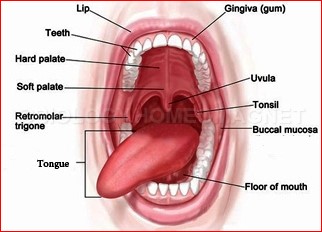Physiology related pages:
- Physiology
- Human Organ System
- Blood
- Red blood cells
- Hemoglobin
- Blood Clotting Process
- Blood Group Types
- Rh Factor
- Blood Pressure
- Normal white blood cell count
- Lymphatic System
- Nervous System
- The Spinal Cord
- Nervous System Function
- Structure of Neuron
- Synapse
- Cranial Nerves
- Autonomic Nervous System
- Endocrine System
- Hormones
- Classification of Hormones
- Pituitary Gland Hormones
- Posterior Pituitary Hormones
- Function of Thyroid Hormone
- Gastrointestinal Hormones
- Where is the Pancreas
- Pancreas Function
- Growth Hormone Deficiency
- Adrenal Cortex
- Enzymes
- Vitamin
- Fat Soluble Vitamins
- Water Soluble Vitamins
- Folic Acid and Vitamin C
- Minerals for the body
- Essential Minerals for the body
- Amino Acids
- Classification of Proteins
- Protein Function
- Protein Properties
- Types of Fatty Acids
- Lipids
- Lipid Classification
- Respiratory System
- Mechanism of Breathing
- Respiratory System Disorders
- Cardiovascular System
- Immunology
- Immune System
- Human muscles
- Properties of Muscles
- Skeletal Muscle
- Muscle contraction
- Heart Muscle
- Smooth Muscle
- BMR
- BMR Measurement
- Bone Joint
- Mouth Cavity
- Male Reproductive System
- Human Urine
- Abnormal constituents of urine
- Sweat Glands
- Mental Illness
- Digestion of carbohydrates
- Protein Digestion
What is Human Mouth?
The mouth is a transverse slit-like aperture, bounded by two soft movable lips
Inside the Mouth Cavity
Inside the Mouth Cavity there is a muscular tongue and teeth arranged on two jaws.
Tongue
It is a thick, musculo-sensory organ present on the floor of the mouth cavity. The posterior part of tongue is attached to the floor of the mouth cavity by a soft ligamentous fold said to be frenulum. The surface of the tongue is covered by mucous membrane lined by stratified squamous epithelium. The upper and lateral surfaces of the tongue remain covered with various types of papillae. Filiform papillae are conical projections distributed in parallel rows over the anterior two-thirds of the tongue. They are whitish and contain no taste buds. Fungiform papillae are mushroom-like elevations distributed among the filiform papillae and are more near the tip of the tongue, and most of them contain taste buds.
Vallate papillae are arranged in the form of an inverted V on the posterior surface of the tongue and all of them contain taste buds. Taste buds are present on the posterio-lateral part of the tongue. A taste bud is a pyriform structure made up of modified epithelial cells. The taste buds in different parts of the tongue respond to particular modalities of taste-sweet, sour, salt or bitter.
Teeth
An adult human being has 16 teeth on each jaw, embedded in jaw-sockets. These teeth are of four different types in their structure as well as functions and they appear twice in the life time (diphyodont). The first teeth are called milk teeth. They are later replaced in the adult by permanent teeth which last for years.
In an adult human being the dental formula is 2123, i.e., in each half of the jaw of the mouth cavity, from middle to backwards, there are two incisors, one canine, two premolars and three molars. Incisors are chisel-shaped with sharp cutting edges. Canines are dagger-shaped and pierce the food. Premolars and molars are broad, strong crushing teeth.
Function of Teeth
The primary function of teeth is to grasp and hold the food in the mouth cavity. They are also modified to erve as a grinding mill for chewing the food. With the help of the teeth, tongue and jaw movements, food is chewed and mixed with saliva in the mouth.
Teeth Structure
Although the shape of different teeth varies, all have a similar basic structure. In general,in mouth cavity a tooth consists of an upper exposed part, the crown, and one or more roots which are embedded in sockets in the jaw bone. The junction of crown and root is called neck. The greater part of tooth is formed by a bone-like material called dentine. In the region of the crown, the dentine is covered by a much harder white material known as enamel.
The dentine is covered by a thin layer of cement over the root. The cement is united to the wall of the bony socket in the jaw by a layer of fibrous tissue said to be periodontal ligament. There is a pulp cavity within the dentine which contains a mass of cells, blood vessels, and nerves. These together constitute the pulp.
The mouth cavity leads to a funnel-shaped pharynx which communicates with a long muscular tube-like oesophagus.


